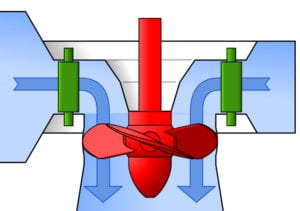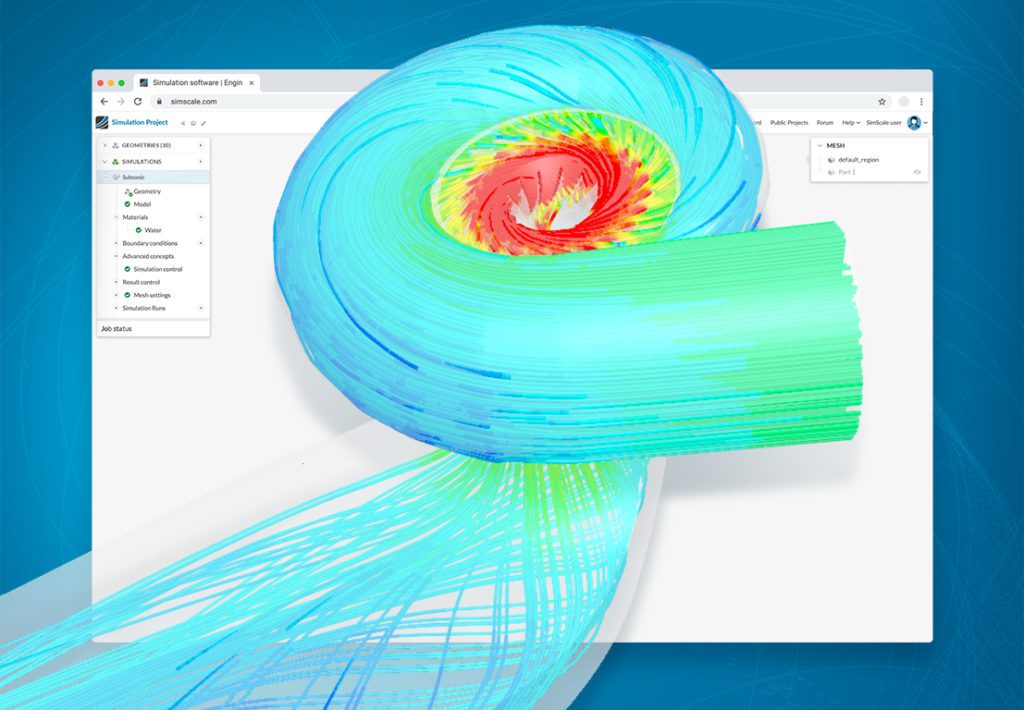In the quest for sustainable energy solutions, water turbines have emerged as a promising option, harnessing the power of flowing water to generate electricity. Among several water turbines, the Kaplan turbine, named after the Austrian inventor Viktor Kaplan, stands out as a symbol of innovation and adaptability. The Kaplan turbine has been a focal point of research and development, especially in the context of its design and optimization with modern simulation techniques.
As the global energy landscape evolves from conventional sources to renewables, hydropower emerges as a key player. Kaplan turbines, known for their adaptable blades and consistent efficiency across varied flow rates, are now central to numerous hydropower installations. But what sets the Kaplan turbine apart from its counterparts? And how has the advent of technology, particularly cloud-native simulation, revolutionized the design and efficiency of these turbines?
This article delves deep into the world of Kaplan turbines, exploring their background, mechanics, working principle, and the role of advanced CFD simulation tools like SimScale in the design of Kaplan turbines.
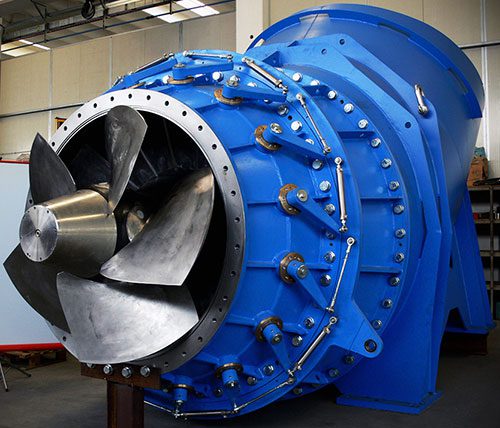
What is a Kaplan Turbine Used For?
The Kaplan turbine is a specialized water turbine designed to generate electricity from flowing water, especially in low-head, high-flow environments. Introduced in 1913 by its namesake, Viktor Kaplan, this turbine has since carved a niche for itself in the world of renewable energy [1].
At its core, the Kaplan turbine working principle revolves around its being a type of axial flow reaction turbine with a pressure head range of 0-60m. Unlike the impulse-based Pelton turbine, which operates optimally within a pressure head range of 300m-1600m, or the mixed-flow Francis turbine, best suited for a pressure head range of 60m-300m, the Kaplan turbine operates primarily through a reaction mechanism.
Water flows parallel to the axis of rotation, and as it passes through the turbine, it imparts its energy, causing the blades to rotate. What sets the Kaplan apart is its adjustable blades, which can be pitched to optimize performance across a wide range of flow conditions. This adaptability ensures that the turbine operates at peak efficiency, even when water flow rates vary.
Historically, the Kaplan turbine was developed as a response to the need for a turbine that could efficiently harness the power of low-head, high-flow water sources. While the Pelton turbine excels in high-head scenarios and the Francis turbine finds its sweet spot in medium-head conditions, the Kaplan is tailor-made for situations where the water’s potential energy is lower, but its flow rate is substantial. This makes it an ideal choice for flat terrains with large rivers, where constructing high dams might not be feasible.
One of the standout features of the Kaplan turbine is its adaptability. Its design allows for both the runner blades and the guide vanes to be adjustable, enabling it to maintain high efficiency over a broader range of flow conditions than most other turbines. This dual adjustability is a unique feature not commonly found in other turbine types.
The Kaplan turbine’s contribution to hydropower generation extends beyond its historical roots to its present-day importance. In an era where global challenges like climate change demand sustainable energy alternatives, the Kaplan turbine stands out for its efficiency and versatility, continuing to be a cornerstone in the energy sector [2].
Kaplan Turbine Simulation and Design
While understanding the Kaplan turbine is crucial, selecting the right tool for its simulation is equally important. This brings us to the evolution of Kaplan turbine design and the significant role of simulations.
The Modern Age: Turbine Design Through Simulation
The evolution of turbine design has been a journey marked by challenges, innovations, and breakthroughs. Historically, the design and optimization of turbines, including the Kaplan turbine, relied heavily on empirical methods and costly trial-and-error approaches. Engineers and designers grappled with the complexities of fluid dynamics, often resulting either in highly expensive design processes or in suboptimal designs in terms of efficiency and performance.
However, the dawn of engineering simulation heralded a new era in the evolution of Kaplan turbine design. No longer were designers bound by the limitations of physical prototypes and costly experimental setups. Instead, they could delve deep into the intricacies of Kaplan turbine design, optimizing every aspect for maximum efficiency. Engineering simulations, powered by advanced computational methods, offered a window into the intricate world of fluid flow, allowing for detailed analysis and optimization without ever having to build a physical model.
Enter Computational Fluid Dynamics (CFD), a branch of fluid mechanics that uses numerical methods and algorithms to analyze and solve problems involving fluid flows. CFD has revolutionized the way we approach turbine design. By simulating the flow of water or air around turbine blades, CFD provides invaluable insights into how changes in design parameters can impact performance.
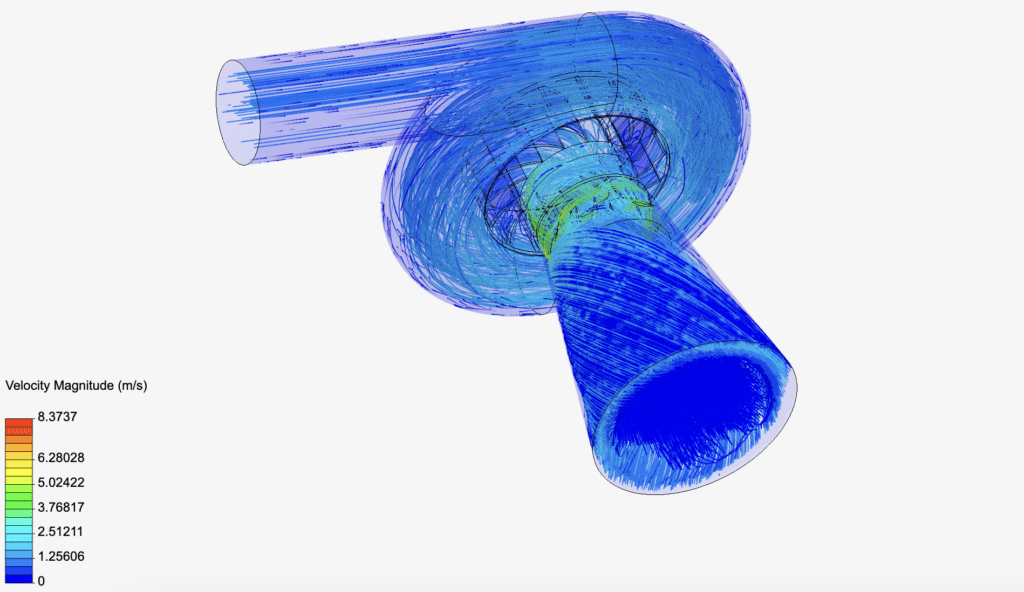
CFD plays a pivotal role in understanding the airflow dynamics as water passes through a turbine. With adjustable blades being a hallmark of Kaplan turbines, understanding how different blade angles affect flow patterns is crucial. CFD simulations allow designers to visualize these flow patterns, identify areas of turbulence, and optimize blade angles for maximum efficiency.
However, the benefits of CFD go beyond just visualizing flow patterns. One of the perennial challenges in turbine design is understanding and mitigating turbulent flow. Turbulence can lead to inefficiencies, increased wear and tear, and even catastrophic failures in extreme cases. Through CFD, designers can simulate turbulent flow conditions, identify potential problem areas, and make design modifications to minimize turbulence.
Another critical aspect of turbine design is understanding stress points. The constant force of water flowing over the blades can lead to stress concentrations in certain areas, which, over time, can lead to material fatigue and failure. Finite Element Analysis (FEA) tools for structural analysis enable engineers and designers to identify these stress points and make necessary design modifications to distribute the stresses more evenly.
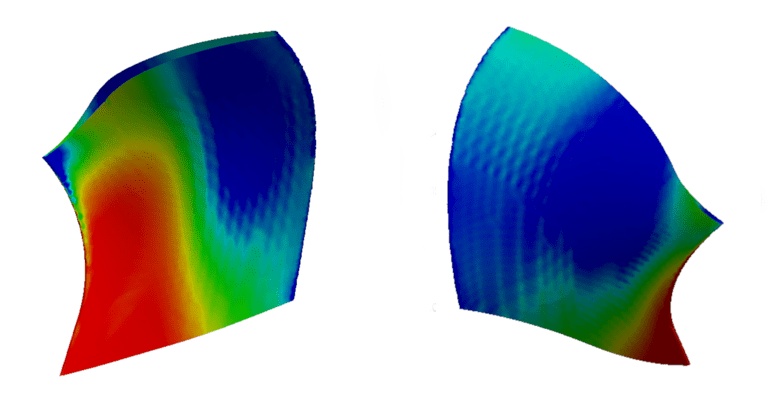
The value of simulation in design optimization cannot be overstated. In the past, optimizing a turbine design could involve building and testing multiple physical prototypes, a time-consuming and costly endeavor. With CFD, FEA, and modern simulation tools, designers can test multiple design variations in a virtual environment, quickly zeroing in on the most optimal design. Furthermore, by harnessing the power of cloud computing, a cloud-native simulation platform like SimScale can empower engineers even further by accelerating their design cycle and eliminating their reliance on expensive hardware.
SimScale: The Ultimate Tool for Kaplan Turbine Simulation
SimScale is at the forefront of the engineering simulation world, offering a cloud-native simulation platform tailored for every type of flow system and fluid dynamics applications, including the intricate simulations of Kaplan turbines. With a user base exceeding 500,000, SimScale’s CFD platform is a trusted tool for multiple professionals across industries.
SimScale CFD Overview
SimScale’s CFD tool is designed to analyze a vast array of problems related to both laminar and turbulent flows, incompressible and compressible fluids, and even multiphase flows. As a 100% web-based interface, SimScale eliminates the traditional barriers of limited computing power, accessibility issues, and high costs associated with simulation software. It enables users to run multiple simulations in parallel, shortening their design cycles from weeks and days to mere hours and minutes. A design team can collaborate on a simulation project by sharing and accessing the platform anytime, anywhere, directly in their web browsers. Therefore, simulating Kaplan turbines on SimScale’s platform allows a team to optimize blade design, enhance turbine efficiency, and predict performance under varied flow conditions, ultimately leading to a more sustainable design and efficient hydropower generation.
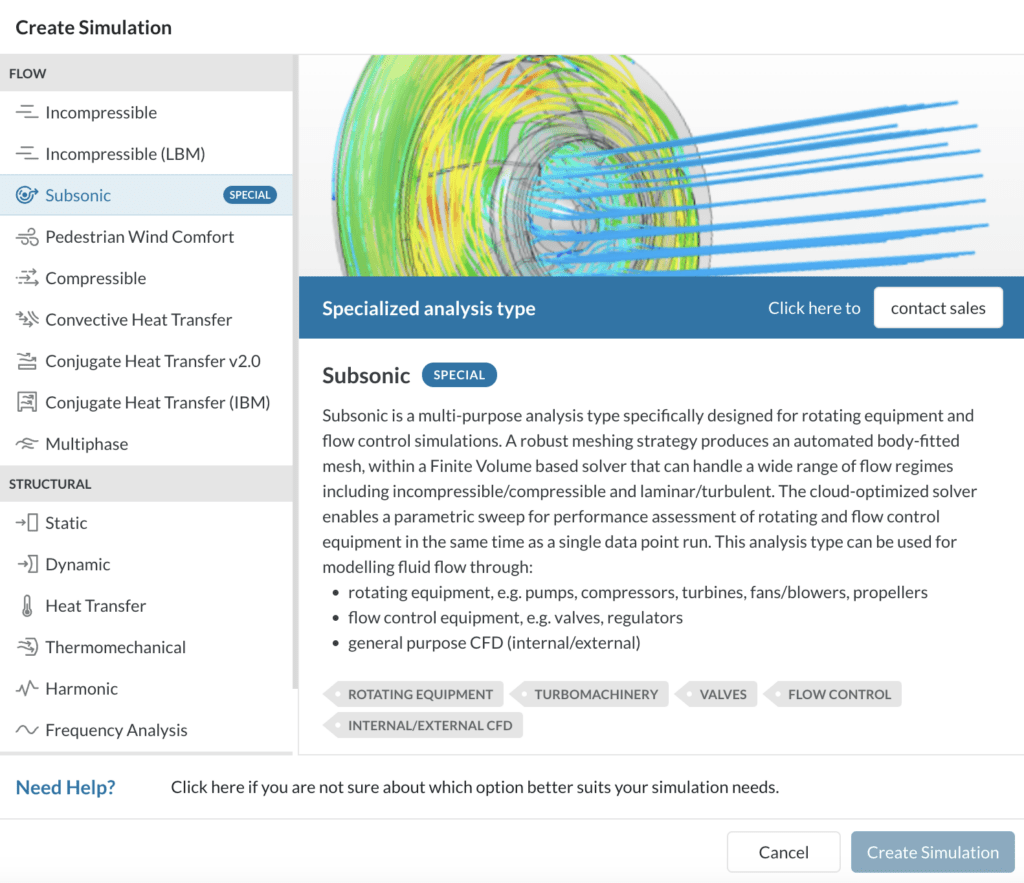
Advanced Features for Turbine Simulation
One of the standout features of SimScale’s CFD software is its GPU-Based CFD Solver using the Lattice Boltzmann Method (LBM). This solver is designed to drastically reduce the running times for transient simulations, making them 20-30 times faster than conventional methods. This is particularly beneficial for simulating complex phenomena like turbulent flows in rotating machinery such as Kaplan turbines. The partnership with Numeric Systems GmbH has led to the integration of their tool, Pacefish®, which supports various turbulence modeling types, making it a unique offering in the simulation world.
Comprehensive Flow Analysis
Whether it’s incompressible or compressible flow, laminar or turbulent regimes, SimScale has got it covered. The platform supports multiple turbulence models, including k-omega SST and k-epsilon, with a versatile range of applications, from pumps and air blowers to engines and turbines.
Multiphase Flow and Advanced Modeling
SimScale’s CFD software is equipped to handle multiphase flow using the volume of fluid (VoF) method. This is crucial for simulating the interaction of different fluids, such as oil and water, in rotating machinery. Additionally, the platform offers tools for modeling fluid flow interacting with rotating parts, using techniques like the Multiple Reference Frame (MRF) or the Arbitrary Mesh Interface (AMI).
Kaplan Turbines: Bridging Past to Future with SimScale
Kaplan turbines, with their century-old legacy, remain pivotal in today’s sustainable energy landscape, harnessing the power of vast water bodies to generate electricity. As the energy sector evolves, the significance of engineering simulation, especially with platforms like SimScale, has skyrocketed.
These simulations empower engineers to optimize designs, ensuring turbines like Kaplan turbines operate at peak efficiency. SimScale, with its cloud-based prowess, is at the heart of this revolution, bridging historical designs with future innovations. If you’re inspired by the blend of history and modern technology showcased in the journey of Kaplan turbines, and you’re on the quest for precision, efficiency, and innovation in turbine design, it’s time to explore the SimScale platform and discover how you can redefine your approach to turbine design and hydropower generation.
References
- Voith GmbH. (2013). The Kaplan Turbine–a Hydropower Innovation Celebrates its 100th Birthday.
- Abeykoon, C. (2022). Modelling and optimisation of a Kaplan turbine — A comprehensive theoretical and CFD study. Cleaner Energy Systems, 3, 100017.
